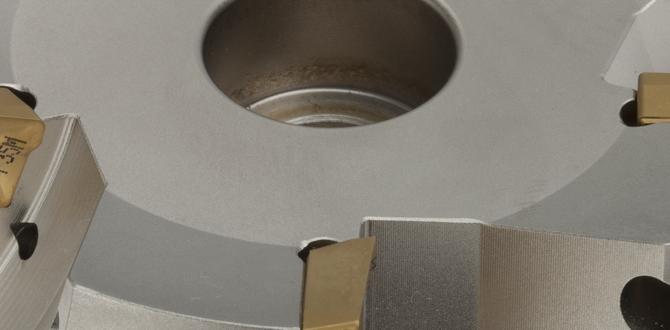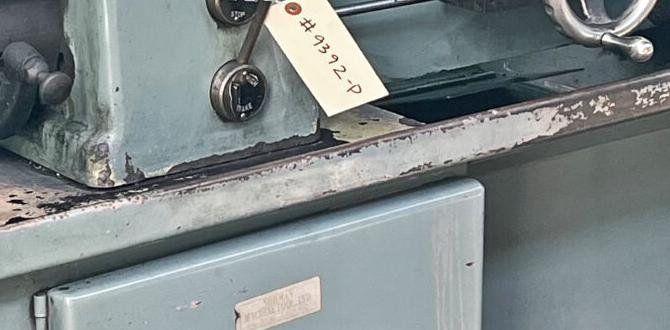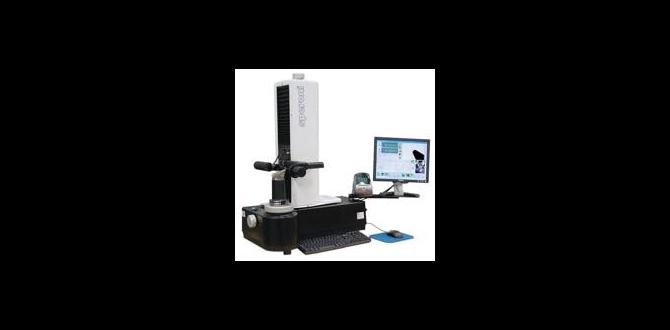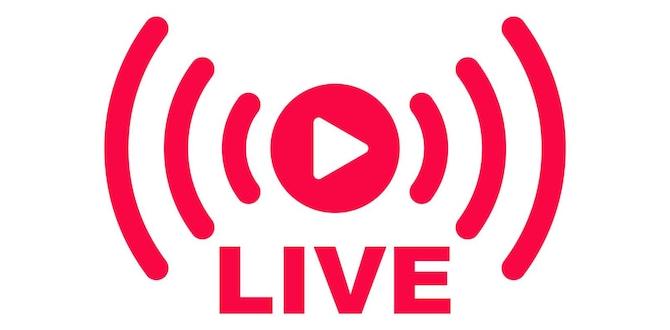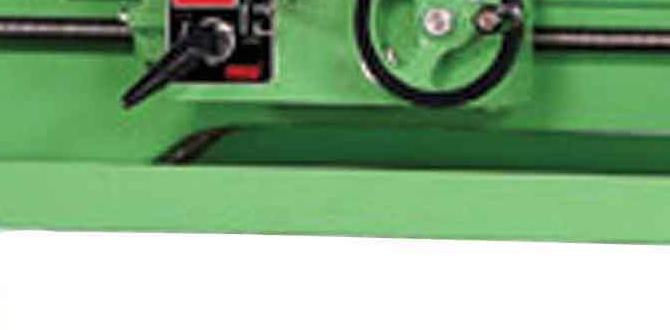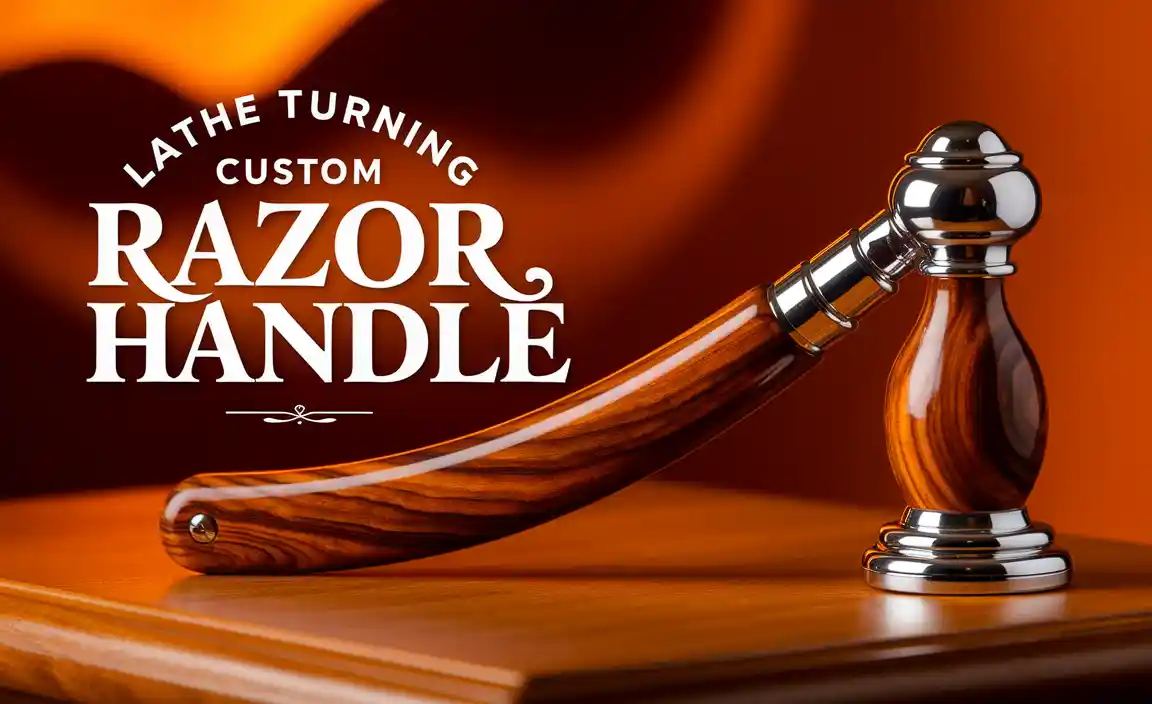Have you ever wondered how to make the most out of milling cutters? The feed direction of these tools plays a big role in how well they work. Imagine trying to slice bread with a dull knife. Frustrating, right? Just like that, if you don’t pay attention to the feed direction, your milling cutter won’t work properly.
Using the right feed direction can improve your cuts and save you time. But many people overlook this important detail. Did you know that the wrong feed direction can even damage your equipment? It’s true! In this article, we will share some helpful tips about milling cutter feed direction. With these tips, you’ll gain confidence in your milling projects and achieve better results.
So, let’s dive in and discover how to master the feed direction of milling cutters!
Milling Cutter Feed Direction Tips For Optimal Performance
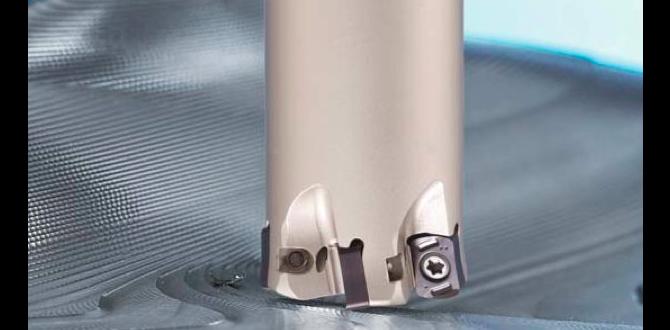
Milling Cutter Feed Direction Tips
Milling cutters work best with the right feed direction. Going in the correct way helps create smoother cuts. Did you know that using a climb milling technique can improve surface quality? This method pulls the cutter into the material. In contrast, conventional milling pushes it away, which may cause rougher edges. Understanding these feed directions can save time and reduce tool wear. So, how do you choose which method? It all depends on your project needs!Understanding Feed Direction
Definition of feed direction in milling processes. Importance of proper feed direction for tool life and surface finish.Feed direction in milling means the way the cutter moves through the material. Choosing the right feed direction is key. It can help your tools last longer and improve the surface finish of the part you’re making. Think about it: a smoother surface means better quality. If you use the wrong direction, the tool can wear out quickly and leave rough edges. Proper feed direction generates less heat and cuts cleaner.
What is the impact of feed direction on tool life?
Correct feed direction saves tools from damage and increases their lifespan. Always check the recommended feed for the material you are cutting.
Tips for Choosing Feed Direction:
- Follow manufacturer guidelines.
- Observe the material’s grain or structure.
- Test both directions to see which works better.
Factors Influencing Feed Direction
Material properties and their impact on feed direction choice. Machine capabilities and limitations affecting feed direction.Different factors help decide how a milling cutter moves. Material properties matter a lot. Softer materials need less force. Harder materials require careful feeding. Next, machine capabilities play a big role too. Each machine has limits on speed and power. Knowing these will help choose the right feed direction. Here are key points to remember:
- Softer materials can feed faster.
- Hard materials need lower speeds.
- Machines have power limits that affect speed.
- Different tools work best with specific materials.
How do material properties affect feed direction?
Material properties help set the right feed direction. For example, soft metals can go faster, while hard ones need careful feeding to avoid breaking tools.
What machine capabilities should be considered?
Always check what your machine can do. Some machines work best with low speeds, while others handle high speeds easily. Knowing this helps in choosing the best feed direction.
Best Practices for Feed Direction
Recommended feed directions for specific materials. Common mistakes to avoid in feed direction selection.Choosing the right feed direction for milling cutters is crucial. Different materials require specific settings. For soft materials like plastic, feed rates can be higher because they are easier to cut. However, for harder materials such as steel, ensure slower speeds to avoid wearing out the cutter too quickly. Watch out for common mistakes like using too fast a feed rate; it can lead to breakage and poor results. Avoid being a “speed demon” here!
| Material Type | Recommended Feed Direction |
|---|---|
| Plastic | Higher feed rates for smoother cuts |
| Wood | Medium feed rates for balanced performance |
| Steel | Slower feed rates to prolong cutter life |
Remember, your cutter is like a pet: treat it well, and it will serve you longer!
Impact on Cutting Forces
Explanation of how feed direction affects cutting forces. Discussions on balancing speed and precision with feed direction.The direction in which a milling cutter moves can change the cutting forces. If the feed direction is not right, there might be too much pressure on the tool. This can lead to tool wear or damage. On the other hand, a proper feed can balance cutting speed and precision. Finding this balance helps make smoother cuts while keeping tools sharp.
- Forward feed: Increases cutting force and speed.
- Backward feed: Reduces cutting force but may slow down the process.
- Side feed: Great for precise cuts, but adjust speed carefully.
How does feed direction affect cutting forces?
Change the feed direction to change the cutting force. Using the right feed can help tools cut better and last longer.
Key Points:
- Clear cutting path can improve results.
- Avoid tool damage by controlling feed direction.
Using proper milling cutter feed direction tips helps in making better cuts. It’s all about finding a healthy balance. A little change can make a big difference!
Tips for Adjusting Feed Direction
Stepbystep guide to adjusting feed direction in your milling setup. Tools and technologies that assist in optimizing feed direction.Adjusting the feed direction can change the game in your milling setup! First, check your machine’s manual for guidance. Step one is to identify the feed direction switch. Flip that bad boy! Next, ensure the cutter is aligned correctly to avoid any mishaps—like accidentally turning your masterpiece into Swiss cheese! Tools like digital gauges can help you tune the setup. You’ll want to keep it steady for a smooth operation. Below is a quick reference guide:
| Step | Action | Tool |
|---|---|---|
| 1 | Locate feed direction switch | Manual |
| 2 | Adjust cutter alignment | Digital gauges |
| 3 | Test feed direction | Trial runs |
With the right tools, adjusting your feed direction can be a breeze! No need to stress—your milling cutter will thank you with smoother cuts and happy machinery!
Case Studies and Examples
Realworld examples demonstrating effective feed direction strategies. Analysis of outcomes based on different feed direction scenarios.Real-life examples show how feed direction can make a big difference. For instance, one factory improved its efficiency by switching the feed direction on their milling cutters. Here are a few key points:
- Changing the feed direction reduced wear on tools.
- Proper feed direction led to smoother finishes on products.
- It also cut down on waste, saving both materials and money.
In another case, a company analyzed different feed angles. They found that a 15-degree angle worked best for their material. This boosted productivity significantly. Such cases highlight the importance of testing feed directions for various tasks.
What are effective feed direction strategies?
Effective feed direction strategies include testing various angles and adjusting based on material type. This approach can lead to better results and fewer errors.
Future Trends in Milling and Feed Direction
Innovations in milling technology influencing feed direction practices. Predictions for the future of milling cutter feed direction in industry.New tools and ideas are changing how we use milling cutters. Innovations in milling technology are making feed direction easier and more accurate. Think about machines that can learn and adapt. They help workers save time and materials. Also, smart software predicts tool wear, allowing for better planning.
Looking ahead, we can expect:
- More automation in milling processes.
- Advanced sensors for real-time data.
- Better materials that last longer.
These trends will make milling and feed direction even more efficient in the future.
What innovations are shaping milling technology?
New machines and smart software are leading changes in milling technology. They help make milling quicker, safer, and more accurate.
Conclusion
In conclusion, understanding milling cutter feed direction is essential for better results. Always match the feed direction with the cutter type. Remember, climbing cuts lead to smoother finishes. Experimenting with different feeds can improve your projects. We encourage you to practice these tips and explore more articles on milling techniques to enhance your skills further. Happy milling!FAQs
Certainly! Here Are Five Questions Related To Milling Cutter Feed Direction Tips:Sure! Here are some tips for using a milling cutter: 1. Always cut in the right direction. This helps make a smooth cut. 2. Keep your hands away from the moving parts for safety. 3. Make sure the cutter is sharp. A dull cutter can break or get stuck. 4. Use the right speed for your material. This helps to cut better. 5. Check your work regularly to avoid mistakes. Happy cutting!
Sure! Please tell me the question you’d like me to answer.
What Are The Advantages And Disadvantages Of Conventional Versus Climb Milling Feed Directions?In conventional milling, the tool cuts against the direction you move the material. This can give a smoother finish, but it requires more power and can wear the tool faster. Climb milling, on the other hand, cuts in the same direction as the material moves. This is easier on the machine and makes less noise, but can be risky if the machine moves too fast. Each method has its good and bad points, so we choose based on what we need!
How Does The Feed Direction Affect The Surface Finish Of The Machined Part?The feed direction is the way the machine moves while cutting. If you change the feed direction, it can change how smooth the surface is. When the feed goes the wrong way, it might leave rough spots. But when you use the right feed, the part looks cleaner and nicer. So, choosing the right direction helps make the part shiny and smooth.
What Factors Should Be Considered When Determining The Optimal Feed Direction For A Specific Material?When figuring out the best feed direction for a material, you should think about a few things. First, consider the size and shape of the material. This helps it move smoothly. Next, think about how strong the material is. We want to avoid breaking it. Lastly, check how it will fit with other machines or tools. All these factors help us choose the right direction.
How Can Incorrect Feed Direction During Milling Lead To Tool Wear Or Damage?When you feed the material the wrong way during milling, the tool can hit the material too hard. This can make the tool dull faster. It might even break the tool if the force is too strong. Using the right direction helps the tool last longer. So, always check the feed direction!
Are There Specific Feed Direction Recommendations For Different Types Of Milling Cutters (E.G., End Mills, Face Mills)?Yes, different milling cutters have different feed directions. For end mills, you should feed downwards while cutting. This helps make a smooth finish. For face mills, feed in the same direction as the cutter turns. This ensures better cutting and less chance of damage. Always check your machine’s guidelines for the best results!

